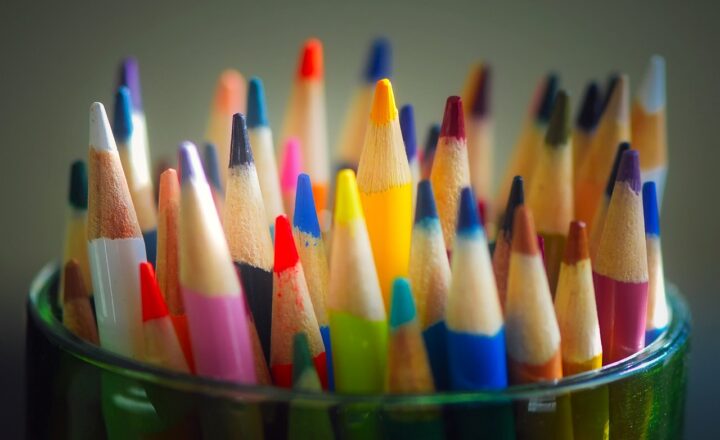Why Certain Colors Influence Our Mood: The Psychology of Color Theory
November 16, 2024

Color is an integral part of our lives, with the power to evoke emotional responses and influence our behavior. From the soothing hues of blue to the energetic vibes of orange, colors shape our perceptions and interactions in profound ways. Understanding the psychology of color theory helps us comprehend how colors can elicit different moods and reactions. In this article, we’ll explore the various concepts of color theory, the emotional impacts of different colors, and how this knowledge can be applied in various fields, including marketing, design, art, and everyday life.
1. The Basics of Color Theory
Color theory is a set of principles used to understand how colors interact and influence visual perception. The color wheel, an essential tool in color theory, organizes colors into three categories:
- Primary Colors: Red, blue, and yellow are considered the basic colors, as they cannot be created by mixing other colors.
- Secondary Colors: These are formed by mixing two primary colors—for example, red + blue = purple.
- Tertiary Colors: These are created by mixing a primary color with a secondary color, such as red-orange or blue-green.
The relationships between these colors—complementary, analogous, and triadic—help create harmonious color schemes for various applications.
2. How Colors Affect Our Emotions
Colors can evoke specific emotions and mood responses. Understanding these associations is crucial for effective communication, particularly in design, marketing, and art. Here’s a breakdown of some commonly recognized color associations:
- Red: This powerful color is often linked with passion, excitement, and urgency. It stimulates energy and can increase heart rates. Red can also be seen as aggressive or alarming, making it a strategic choice in advertising.
- Blue: Generally associated with calmness, trust, and stability, blue tends to lower heart rates and is frequently utilized in corporate branding. It can evoke feelings of peace and relaxation, often making it ideal for healthcare settings.
- Yellow: Symbolic of happiness and positivity, yellow can uplift moods and inspire creativity. However, excessive yellow can lead to anxiety or frustration, indicating that moderation is key when using this color!
- Green: Associated with nature, balance, and harmony, green has a refreshing quality that promotes restfulness. It’s a popular choice in spaces meant to evoke tranquility, such as wellness centers or spas.
- Purple: Purple is often seen as a color of luxury, sophistication, and spirituality. It can evoke feelings of creativity and inspiration but can also be seen as a color of introspection.
- Orange: Combining the energy of red and the happiness of yellow, orange represents enthusiasm, creativity, and warmth. However, it can also be perceived as overstimulating in certain situations.
- Black: While often associated with elegance and sophistication, black can also represent mourning or negativity. It’s a powerful color that can create a strong visual statement in design but should be used thoughtfully.
- White: Symbolizing purity, innocence, and simplicity, white can evoke feelings of peace and clarity. It’s commonly used in minimalist designs, helping to create open and airy spaces.
Understanding these emotional associations is fundamental for artists, designers, and marketers who want to influence consumer behavior or emotional responses through visual means.
3. Applications of Color Psychology
Color psychology finds its relevance across various fields:
- Marketing and Branding: Brands often choose color schemes based on their desired emotional impact. For example, a food brand may use red to evoke appetite, while a tech company may choose blue for trust and reliability.
- Interior Design: Colors in spaces can influence how we feel in our homes or workplaces. Warm colors like reds and oranges can energize a room, while cool colors like blues and greens can calm it.
- Art and Therapy: Colors play a critical role in conveying emotions in art. Art therapy can also utilize colors to help individuals express feelings that are hard to verbalize.
- Fashion: Designers often consider color trends and psychological impacts when creating collections. What we wear can influence not only our moods but also how others perceive us.
The impact of color on perception and behavior is essential in crafting effective strategies in these industries.
4. Cultural Perceptions of Color
The association of colors with emotions varies significantly across cultures. For instance:
- In Western cultures, white is typically associated with purity and weddings, while in some Asian cultures, it symbolizes mourning.
- Red can symbolize good fortune and happiness in Chinese culture, while in South Africa, it is often linked to mourning.
- In Middle Eastern countries, green holds religious significance and is often viewed positively, while in Western contexts, it may represent jealousy or greed.
Understanding cultural differences in color perception is crucial for global brands and marketers to create targeted messages that resonate positively with diverse audiences.
5. Conclusion
The psychology of color theory reveals that the colors we surround ourselves with influence our moods, emotions, and decision-making processes. By understanding the emotional impacts of colors, we can leverage this knowledge across various fields, from marketing strategies to interior design.
As you continue to explore the world of color psychology, consider how the colors in your environment affect your daily life. Choose colors intentionally to create spaces or brands that elicit the desired feelings and reactions. With the power of color, you can transform environments, evoke emotions, and communicate effectively with your audience.







